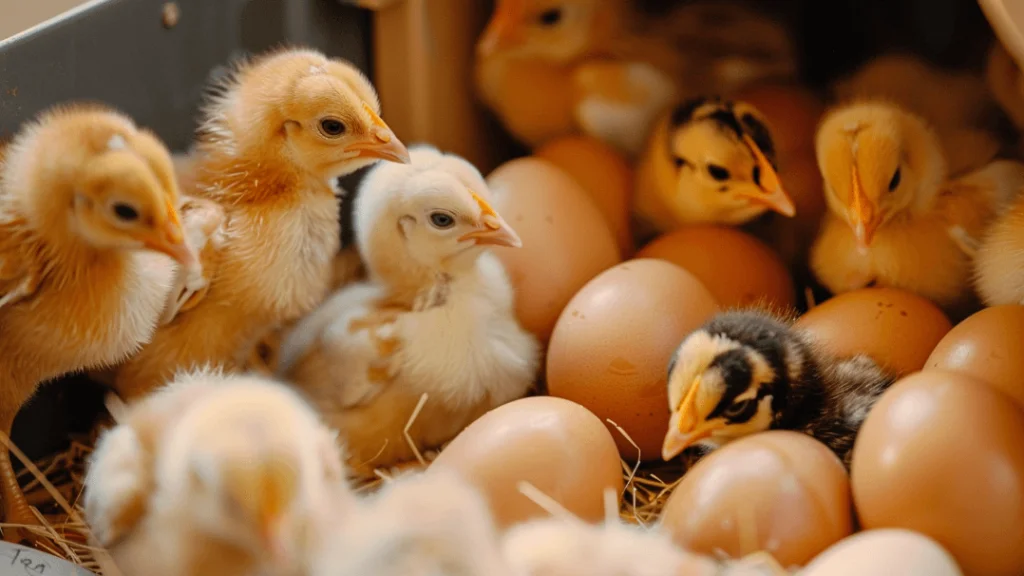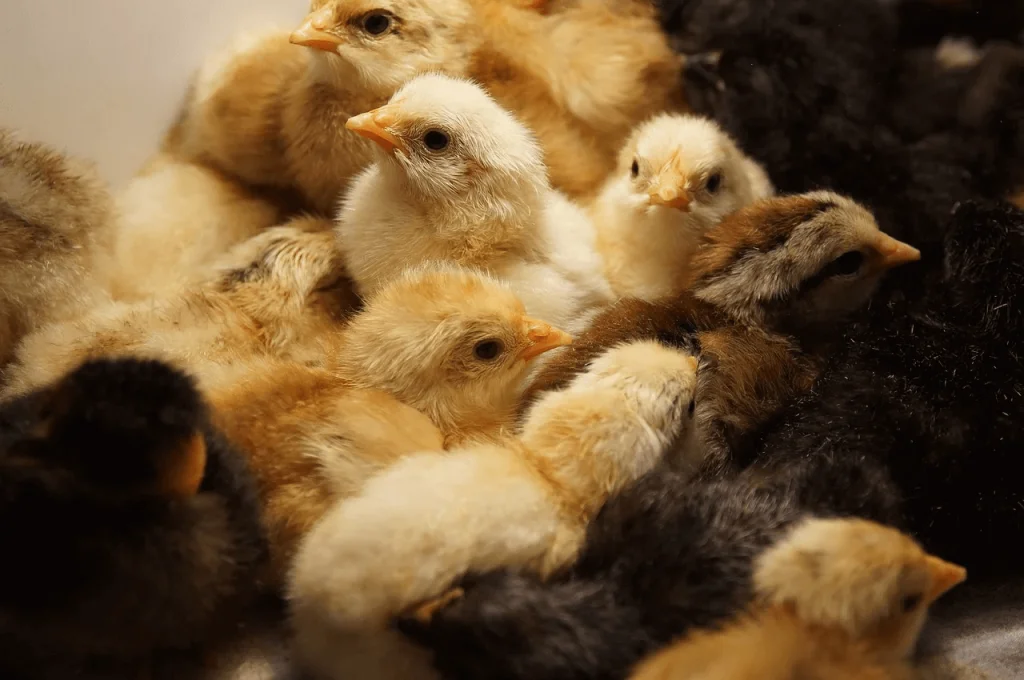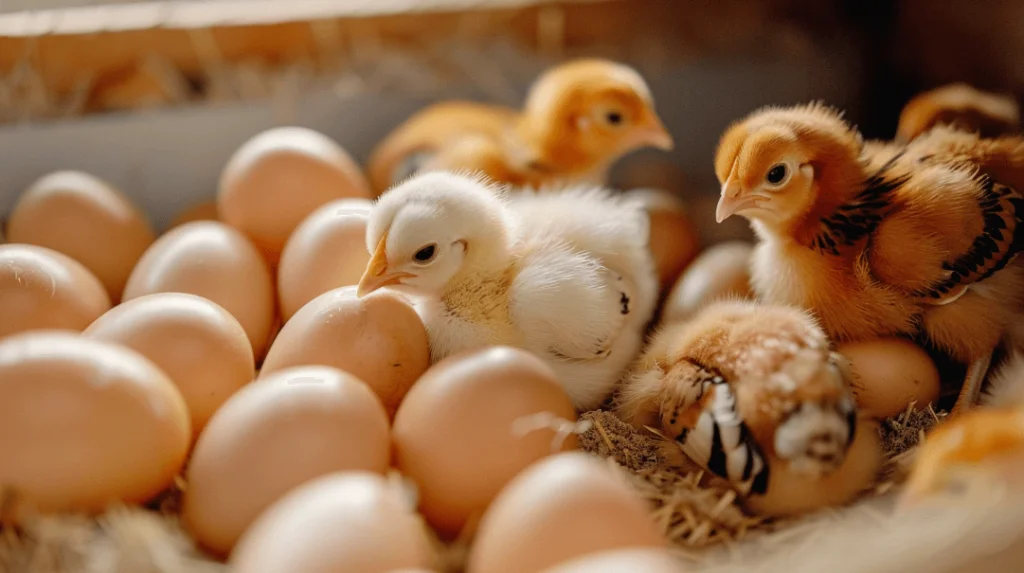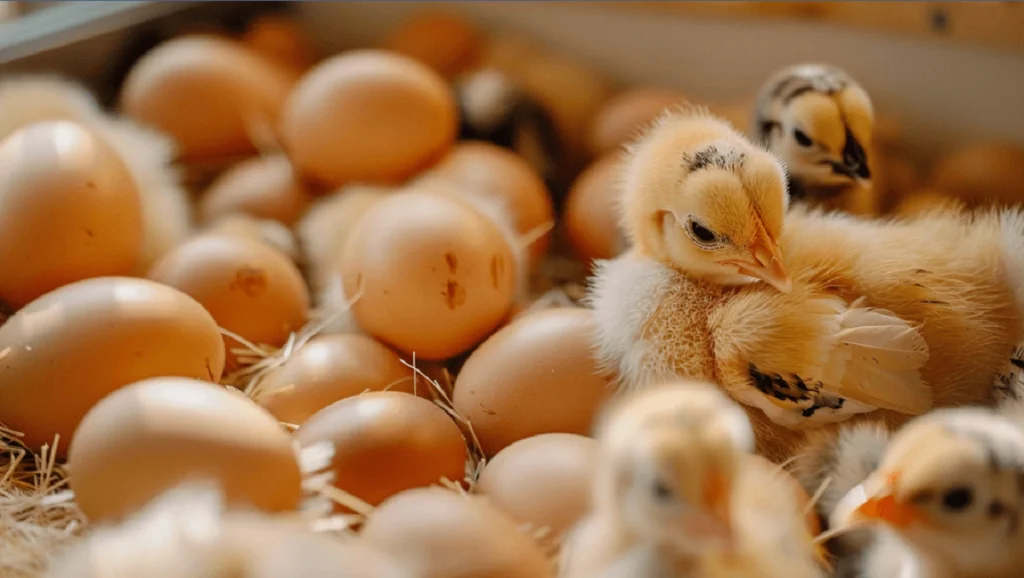Have you ever had constant problems with your humidity levels in your incubator? After all, ensuring you have an appropriate humidity for your incubator is very important for successful egg hatching. But you do not have to worry for long. Because we will guide you on how to increase humidity in an incubator for you to get the best results!
Today, our aim is to explain to you the heating method that the VEVOR egg incubator uses to efficiently create a moist environment for your eggs to hatch. Developed to address humidity control issues, VEVOR presents creative resolutions to achieve high hatching rates as well as healthy chickens.
Table of contents
Understanding Humidity Needs in Incubation
The Science of Humidity and Hatching Success
The understanding of the role of humidity in the egg incubator is equivalent to getting into the secret formula of successful hatching. Humidity isn’t only about making the air moist. It also has a direct effect on the development of the embryo from the egg.
You see, the eggshell has small holes that become like sponges once they absorb the air and moisture. The embryo of the chick develops under the ideal temperature and humidity conditions to ensure proper growth and development.
In case of excess humidity for an incubator, the egg will be ‘overwatered’, which eventually may disrupt the breathing cycle of the embryo. On the other hand, if the humidity is low enough, the eggs will lose their moisture too quickly which leads to dehydration and developmental problems. Ideal humidity levels through the incubation process improve the quality and quantity of healthy growth of embryos and hatching success.

Optimal Humidity Levels for Different Incubation Stages
Similarly, to us, embryos also have gradually changing needs as they pass through the developmental process. At the first stages of incubation, you should know how to increase humidity in an incubator to avoid the egg’s dehydration. During the incubation period, the humidity level can be properly reduced to match the real conditions inside the mother hen’s nest.
By knowing the selected levels of humidity per incubation stage, you will be in a position to create a perfect environment for your eggs to hatch successfully.
How to Increase Humidity in Incubator

Did you know that humidity in the incubator must be maintained at sufficient levels for egg hatching to take place? Let us check how to increase the humidity levels in an egg incubator for a successful incubation process.
Adding Water: Simple Yet Effective
What is a quick way to add moisture to your incubator? That would be the channels or trays that come with it. Many egg incubators that are built nowadays already have these water reservoirs by design. Their sole purpose is to maintain proper humidity levels.
To manipulate humidity, you just have to fill channels or trays as much as you would like. It is important to keep an eye out for the humidity and renew water if necessary.
The Role of Ventilation in Humidity Control
Ventilation is a key aspect of providing humidity regulation. By varying the ventilation settings, you can regulate the amount of air as well as moisture within the incubator. By providing additional ventilation you will get the airflow on the move and lower the humidity.
In contrast, if you reduce the ventilation you will keep the moisture inside and raise the humidity in the incubator. A successful egg hatching requires that you maintain a balance between ventilation and humidity. By doing so, you can generate the right environment for egg hatching.
Utilizing Sponges or Cloths to Boost Humidity
Another option for how to raise the humidity level inside the incubator is using damp sponges or cloths. It would be as simple as putting a wet towel inside the incubator.
You would just wet a towel or sponge, squeeze back any excess water using your hands then put it inside the incubator. The water evaporates from the sponge or cloth, making the air inside the incubator more humid. Keep in mind to balance the humidity and replace the number of sponges or cloths as required to achieve and maintain the humid environment.
Manual vs. Automated Humidity Control
When we talk about controlling humidity for incubators, you can use manual or automatic ones.
Manual procedures include adjusting the airflow level, adding water with hands, and observing the humidity level at all times. Although manual control demands additional effort, it can be useful if you monitor and adjust it carefully.
Nevertheless, some incubators feature built-in humidity control functions, which are more effective. These incubators are provided with sensors for measuring humidity and automatically adjust ventilation and water supply to suit the ideal humidity levels. Brands like VEVOR have come up with advanced incubators that can regulate humidity automatically. Thus, they make the work easier and stress-free for poultry lovers.
Practical Tips to Manage Incubator Humidity

Monitoring Tools and Techniques
Humidity management can be achieved by choosing the most appropriate monitoring tools.
For example, hygrometers are among the useful gadgets that help us track the humidity level inside the incubator. Wet bulb thermometers get the job done more professionally as they show the evaporating cooling effect as well. Also, egg weighing is another practical method. Here an assessment is done on the loss of egg weight to determine humidity and make adjustments where necessary.
You will be able to use these tools to check humidity levels and to make sure that they remain in the optimal range.
Adjusting Humidity: From Water Trays to Ventilation
There are many ways of regulating the humidity level in the incubator. Water trays are frequently distributed to maintain humidity. They are filled with water that ultimately evaporates into the air, thus increasing the humidity in the air. Similarly, humidifiers can be very effective when it comes to raising humidity levels, particularly in those larger-need incubators.
Ventilation is another vital technique of how to manage humidity. Hence, incubator airflow allows you to control humidity levels.
Apart from that, it is worth mentioning that temperature control contributes greatly to the humidity management process. This is because hotter temperatures might elevate water evaporation and humidity levels.
The Role of Ambient Conditions
Besides the inner factors such as room temperature and surrounding humidity, the atmosphere around incubators has also a direct impact on the atmosphere inside it.
The room temperature affects the rate of evaporation. As the evaporation goes faster, humidity levels inside the incubator become higher.
Furthermore, ambient humidity also can be the source of affecting the total moisture of the air. You can achieve stable and optimal humidity levels for successful egg incubation by watching the ambient conditions and making the necessary changes. You can insulate the incubator or use a dehumidifier.
The VEVOR Egg Incubator: Your Humidity Control Ally

Features That Make VEVOR Stand Out
During hatching egg incubation, the VEVOR egg incubator has a special design to maintain accurate humidity at all times through its range of innovative features. Here are some key features that make VEVOR the top choice for humidity management:
- Automated Humidity Control: VEVOR incubators come with state-of-the-art automation that makes the job of humidity regulation very easy. The sensors are installed internally and continuously monitor the humidity and adjust the levels as required for embryo growth.
- Digital Display: Visualizing the humidity inside your incubator is highly convenient with VEVOR, making sure moisture levels are appropriate in real time. Digital reading allows you to monitor a humidity value and to keep track of it at any time if needed.
- Adjustable Ventilation: The right ventilation will play a key role in regulating moisture. VEVOR’s incubators are flexible. Here one can adjust the ventilation settings to guarantee optimal airflow. This prevents moisture from building up and therefore keeps humidity balanced for the entire incubation period.
How VEVOR Addresses Common Humidity Challenges
Humidity control is one of the challenges VEVOR incubators have been engineered to effectively handle. This is to make sure your eggs have the best environment for hatching and success. This is how VEVOR deals with the problems of high and low humidity.
- Precise Humidity Regulation: VEVOR incubators do that through integrated technologies for fine-tuning the humidity down to precise levels. Whatever humidity range is low or high, the VEVOR pace will be adjusted by the system reliably to optimize conditions required for the proper development of embryos.
- Moisture Management: VEVOR incubators are made to regulate moisture levels prohibiting the accumulation of thick humidity and its consequent bacterial growth. VEVOR guarantees that the humidity does not get out of range, required for the normal development of the embryo.
Enhancing Your Incubation Process with VEVOR
The use of a VEVOR egg incubator makes the egg incubation process easier and can be exceedingly useful. Here are some strategies for seamlessly incorporating VEVOR into your hatchery setup:
- Utilize Automated Humidity Control: When it comes to maintaining a constant humidity condition, VEVOR incubators have many advantages over manual ones. Being programmed to maintain the level of humidity that is most suitable for your nature of business is reliable. This functionality enables you to maintain a constant level of humidity for your incubator.
- Monitor Humidity Levels Regularly: While VEVOR incubators show the humidity control function automatically, it is important to monitor its work regularly to make sure it performs as it should. You can use hygrometers or built-in humidity sensors to measure the level of humidity and adjust as necessary.
- Adjust Settings as Needed: Depending on the ambient conditions and the stage of development of the embryos, you should tune the VEVOR incubator settings so that they are the best humidity levels for development. Familiarize yourself with the control panel and make the necessary adjustments to warrant consistent hatch success.
Using VEVOR in the development plan for humidity could lead to simplification and improvement of the incubation procedures, increasing the success rate.
Summary
Overall, accuracy in the humidity regulation of the egg incubator is vital pointing towards good hatching outcomes. Now you know how to increase humidity levels in an incubator. Through comprehensive knowledge of the science of humidity, along with incorporating the strategies appropriately, you can optimize hatching rates and consequently improve young chick viability.
On the aspect of reliable and user-friendly incubation solutions, VEVOR provides you with the best of features. Innovative features that are provided by the VEVOR egg incubators, coupled with excellent performance, provide people who love poultry and breeding chickens with the ideal way of getting the best hatch results. There is no need to compromise on hatch rates. You can have a successful batch of hatching today with the help of VEVOR.





